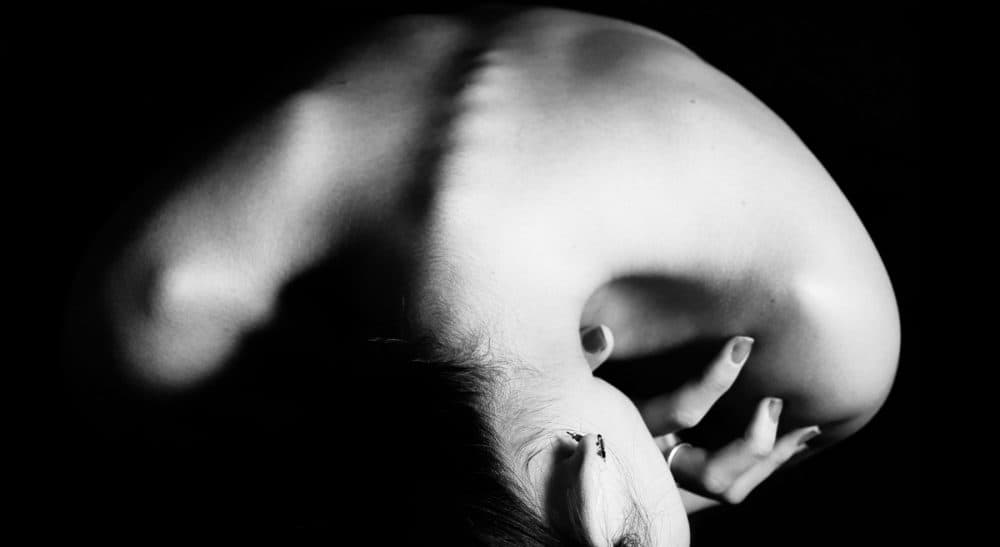Advertisement
Not My Daughter: I Thought I Could Protect Her From Anorexia — I Was Wrong

The picture in the local newspaper showed her, my 3-year-old with soft bangs and a round face, at our library’s story hour clinging to her ever-present bag of Cheerios. I shunned the neon colors of the sugary cereal she pleaded for. I saved the picture and tacked it to the fridge.
Rosie was still in that Cheerio phase on Sept. 11, 2001. An ever-vigilant mother, I snapped off the news after the second plane hit the South Tower. Instead of watching the horror outside, I helped Rosie build her own safe world with a Fisher-Price barn and a bin of plastic animals. When Mayor Fox, cocky red and boasting a bushy tail, refused to balance on the roof like Rosie wanted him to, together we banished him to the toy box. We ran the playroom.
She didn’t say "I won’t." If she had been defiant, I could have argued with her. "I can’t" meant I had lost her.
A few years later, after the carefully chosen preschool, the world began to intrude on her. Grade school meant friends — getting them, losing them, or never having them at all. When other girls flung themselves at each other, Rosie didn’t join in. She hung back, conversing with adults, but wary of other children. I cringed when she said she was alone at recess. I hated each child who didn’t include her. I loved the one girl who invited her for a sleepover.
I knew Rosie was quirky. As a 10-year-old, she read child psychology books and Stephen King. She drew comic strips and began writing a novel. She always wore a cap from her role as a village boy in "Fiddler on the Roof."
Unfortunately middle school was not the place to be quirky. At afternoon pickup, I watched clusters of kids spill out of the school with the exuberance of those whose greatest worry was the evening’s homework. Rosie was a solitary figure among them, weaving her way towards me and avoiding her classmates. In the car she pulled her knees to her chest and huddled inside her jacket.
I knew she was unhappy but I tried to believe it was the cuts and bumps of moving from childhood to adolescence. To ease her way, I became her cheerleader. If she mentioned a friendly classmate, I suggested they get together. If she smiled, I rewound the day to figure out how to make her smile again. I buried her in suggestions about making friends. I pushed her towards anything that might help — theater groups, summer camp, therapy. I was determined to fight the sadness consuming her.
None of the girls eat lunch. She may have said it once or twice and I’m sure my answer was a vigorous denial. I thought not eating was something girls who spent too much time reading teen magazines did. Not my daughter.
Until she stopped eating.
In the emergency room with her, I could see the ridges of her delicate spine beneath the enormous hospital gown. I wanted to pick up her small body, let her wrap her legs around me as she always had, and carry her back to the playroom. But I couldn’t.
Rosie’s pediatrician was with us. I liked her and had selected her for my daughters when we were both young mothers. But in the emergency room, something shifted. There was judgment in her tone, that little edge, that now separated me from the good mothers who didn’t let this happen to their daughters.
“Low blood pressure, stress on the heart, lack of bone density are all significant risks from anorexia,” she said.
I wasn’t going to use that word — ever. Rosie was struggling to eat, but she was my child, not a diagnosis.
“I will give her a week to see if she starts eating again.”
The five jellybeans Rosie had carefully chosen hours ago were still in her hand — still uneaten.
I pictured her as a 6-year-old, laughing at the dinner table as she draped spaghetti in her hair, as an 8-year-old dividing up a pile of Halloween candy with her sister, as a 10-year-old sneaking in extra chocolate chips while she made cookies. Food was fun in our house, not a struggle.
Then I remembered a recent winter evening. She was getting out of the car and I told her I would give her dinner later. She said she would have a granola bar at rehearsal. I argued, but not vehemently. I remember her running across the street, disappearing into the shadows of the one streetlight. Now that evening felt dark and ominous. Somehow, had I allowed this to happen?
I left the emergency room determined to get her to eat. I bought fresh strawberries from the farm where we had always picked them together. I concocted smoothies. I made my own granola bars. I baked bread. I did it all. And, ignoring my food, she curled into her beanbag chair with her cat.
I knew I had failed her. I could only hope that, at some point, she would choose to save herself.
When I tried to talk to her, she only said one thing.
I can’t.
She didn’t say I won’t. If she had been defiant, I could have argued with her. I can’t meant I had lost her. She had withdrawn from the world where eating was okay. I could only ask her why.
You don’t understand.
She was right, I didn’t understand. And there was nothing left for me to do.
A few days later Rosie was hospitalized. Her last night at home, I went into her room while she was asleep. She was crouched over her knees — the same way she had slept since she was a baby — as if she knew she needed to protect herself. Her tangle of hair was hiding her face and one thin arm hung out beneath the blanket. I knew I had failed her. I could only hope that, at some point, she would choose to save herself.
Editor's note: The name of the author's daughter has been changed to protect her privacy.
